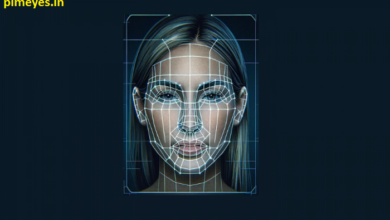Image Search AI: Transforming Visual Discovery and Analysis

Accessibility of the Internet has played a major role in revolutionizing the nineties’ search patterns with the introduction of image search AI. Visual search capabilities that utilize artificial intelligence to analyze and interpret images are becoming an increasingly robust alternative — even a replacement — to traditional text-based searches. Image search: Tools that use AI and Machine Learning to allow users to search and find information — products, and services — by uploading an image or by using visual cues, making the search process more intuitive and efficient. This ultimate guide dives into how image search A I works, its uses, advantages, and what the future looks like. If you endeavour to stay at the cutting-edge of the emerging AI technology or just interested in its benefits to you. We explore the image search AI landscape and its advanced possibilities that may well change the way we search online.
What is Image Search AI?
Many of them give you information about finding image search AI. Image Search AI adopts a different paradigm than classical text-based search engines; users query using an image rather than a keyword, resulting in a much more human and natural way of interacting with a search engine. In essence, image search A I is powered by machine learning algorithms, particularly deep learning and convolutional neural networks (CNNs), which help analyze and understand the content of images. Such technologies allow image search artificial intelligence to identify objects, patterns, hues, and even contexts in a photo, thereby making search results precise and relevant. The potential of AI image search to understand visual data has already begun to bring about a whole new world of possibilities in fields like e-commerce, healthcare, entertainment and beyond Image search AI connects the two worlds of visual content and searchable data transforming the way we search and interact with information into a faster, more efficient, personalized experience.
How Image Search AI Works
Explaining how image search AI works goes to the heart of the complex algorithms that allow machines to understand and interpret visual information. Machine learning is at the core of image search A I, where algorithms are trained on large datasets of labelled images, allowing them to identify and classify different components within an image. To achieve this, deep learning approaches are employed, especially convolutional neural networks (CNN), due to their high proficiency in detecting patterns in incoming images. When a user uploads an image to be searched, image search artificial intelligence first preprocesses the image, changing characteristics such as size and resolution to best analyze it. Using these features, the AI then analyzes what it sees against its massive database of encoded images to find similarities and matches of these visuals. 自然语言处理(NLP)也被引入到高级图像搜索AI系统中,以更好地理解语境并提高搜索相关性 By blending all these technologies image search AI are making the search more useful or meaningful and changing the way people interact with visual content on the web.
Use Cases of Image Search AI
Use Cases for Image Search AI: Industries That Benefit Similarly, image search AI can be used by various sectors and helps to maximize the usefulness of image search on their respective platforms. In e-commerce, image search AI enables customers to discover products through photo uploads, which simplifies their shopping experience and maximizes the conversion rates. Image search A I is used on social media to improve content discovery and user experience, as it can also be used to recommend visually similar posts or to detect trends. Image search AI improves healthcare by providing sophisticated diagnostic tools that can analyze medical imaging data to pinpoint issues early in the diagnosis process. Image Search A I in entertainment is often used for content recommendation and content management for music, movies, and arts. The concerned AI in this case enables the user to find the relevant movies, music, and arts as per their visual preferences. Image search AI also contributes to security by performing tasks such as crowd monitoring and risk analysis, identifying potential dangers with great precision. Such various applications illustrate the transformative potential image search AI holds, revealing opportunities for innovation and optimization in numerous industries through the use of visual information.
Benefits of Image Search AI
For many, bringing image search AI into practice has many advantages that can benefit both users and businesses. The main advantages of AI in image search is that it can make the search process more intuitive and efficient. They can just upload an image to identify a product, information or service similar to it, rather than entering precise keywords. Although this provides users with information in an easier fashion, it also enhances user satisfaction, which leads to more engagement and retention. Image search AI also enables businesses to tailor their offerings based on visual preferences and behaviors, paving the way for personalized marketing and targeted advertising. Moreover, image search AI promotes data analysis and insights by allowing the extraction of valuable information from visual content, which can help inform strategic decisions and drive innovation. So, the precision and swiftness of the image search AI also plays a role in operational efficiency, minimizing the time and resources needed for image tagging and categorization by hand. In summary, image search AI adds immense value by refining search operations, tailoring user experiences, and streamlining business workflows.
Challenges in Image Search AI
Image search AI has a large number of benefits, but not without its challenges that need to be overcome in order to harness its potential. However, one of the major hurdles is the challenge of correctly decoding and understanding the large variation of visual information. Images may also differ significantly in lighting, orientation, angles used, and quality, so image search AI finds it difficult to identify and classify the same image consistently. Moreover, one major challenge lies in the availability of large and high-quality datasets for training AI models used in image searches, as collecting and labelling required data can be a lengthy and resource-intensive process. Another concern with image search AI is privacy, as these systems often require users to upload images, and there is the potential for misuse or mishandling of this data, so data protection measures are important. Additionally, image search AI needs to constantly evolve to stay up-to-date with changing visual trends and patterns, necessitating regular updates and adjustments to its processing algorithms. Overcoming these adversities is the key to image search AI improving and gaining trust in the market, as well attempting to furnish accurate image-based search experiences.
Image Search AI in E-commerce
Image search AI has transformed product discovery in e-commerce. From uploading images of things they’re interested in buying to using it as a visually aesthetic catalogue of fashion pieces to blend with their wardrobe, image search AI gives a seamless pathways into a visually-driven purchasing solution. This technology improves product search precision, enabling customers to discover exactly what they want without needing to enter precise keywords. As an example, a user can click a picture of a clothing item that he/she likes, and the image search AI can find similar items in different online stores, saving time and effort. Finally, image search AI automates image tagging and categorization as well which makes it easier for retailers to be organized and display their products. By suggesting items that align with the user’s visual preferences and past browsing history, image search AI can create personalized recommendations that drive sales. Customer can visualize the product in real-life before purchasing with image search AI also supports the AR (Augmented reality) applications. Therefore, image search AI improves the e-commerce experience, making it more intuitive, efficient, and tailored to individual consumers and businesses alike.
Social Media: AI in Image Search
Image search AI has proved valuable for social media platforms, boosting user engagement and content exploration. An aspect of image search AI is allowing users to find visually similar posts, photos, and videos and discover new interests. The ability becomes especially helpful in looking for trends, styles, and ideas that resonate with individual preferences. Other features like auto tagging of photos, face detection and content moderation all leverage image search AI, contributing to both user experience and a safer platform. For content creators and influencers, image search AI can be used to gain valuable insights into visual trends and audience preferences, helping them create tailored content that resonates for better engagement. In addition, image search AI improves advertising campaigns by creating very specific visual advertisements corresponding to what users upload and how they engage with them. The skills to analyze and interpret visual data are also helpful in mitigating misinformation by confirming the veracity of pictures posted on networks. 3. Image search artificial intelligence makes social media platforms more interactive, more personalized, and more secure overall.
Image Search AI in Healthcare
This article outlines some significant ways the healthcare industry has leveraged image search AI to improve diagnosis accuracy, operational efficiency, and patient care. Medical imaging: Image search AI is essential in medical imaging, where it is used to analyze X-rays, MRI scans, and CT scans. Image search AI enables healthcare practitioners to diagnose diseases like cancer, neurological ailments, and cardiovascular issues at an early stage by accurately spotting patterns and abnormalities. However, early detection is critical for successful treatment and better patient outcomes. For example, its ability to automate the organization of a large number of medical images can help health practitioners save time going through patient records. Telemedicine: Image search AI helps doctors to examine images submitted by patients in real time for diagnosis and consultation from a distance. In addition, image search AI facilitates scientific research and part of the process by analyzing big data sets of medical images in order to guide trends and improve medical knowledge. In summary, image search AI in healthcare is a powerful tool that enhances diagnosis processes while increasing the clinical efficiency leading to improved patient care.
Image Search AI in Entertainment
The image search AI is used in the entertainment industry for improving content creation, distribution, and user engagement. As for the application of AI for image search, it helps to explain the organization of data without text by letting people discover movies, music, and similar products from visually attractive objects. One such AI, image searchAI, allows users to upload a movie poster, and find similar movies or movies with similar visuals. So, Image search AI is also useful fort creating visual effects in ythe videos as well and it automatically identifies the objects and events that are to be used. This automating process increases the speed of production and creates higher creative flexibility. Image search AI also find its usage in gaming, where it helps analyze and replicate real world graphics and characters, adding to the liveliness and realism of the gaming world. Hence, image search AI boosts marketing and promotional strategies as well by allowing visual advertisements targeted to users based on their preferences and engagement. With the incorporation of image search AI, the sector can render personalized, captivating content, addressing the different likes and preferences of its audience.
Text & Image Search AI in Security & Surveillance
Image search AI has played a great role to enhance security and surveillance systems by making them a reliable and efficient monitoring solution. AI based image search technology enables instant recognition of faces, this helps the security staff to quickly recognize and monitor people in crowded or high risk areas. Such ability is critical to safeguarding against unauthorized breach, enabling threat identification and ensuring the safety of the general public. Moreover, image search AI help in analyzing surveillance footage, automatically identifying suspicious activities, unusual behavior, or objects of interest, minimizing the need for constant human monitoring. This automation not only speeds up time-to-respond but also reduces the risk of human error during critical times. Image search AI is also helping to improve cybersecurity by analyzing visual data for potential signs of tampering or unauthorized access to secure systems. Moreover, image search AI assists with the management and organization of massive amounts of surveillance data, enabling quick retrieval and review of specific incidents as needed. Implementing image search AI in security and surveillance systems can lead to improved safety, efficiency, and preemptive threat management.
Is image search AI ethical based on any ethical frameworks?
With more text to image AI, there are more ethics behind it that must be faced. Privacy is a key issue in image search AI, as much of this technology is based on the use, collection, and analysis of personal images, often without the explicit knowledge or consent of the owners of these images and against the principles of data protection. Transparency regarding the use of user images and obtaining appropriate consent is essential for maintaining trust and compliance with privacy regulations. Image search AI can also perpetuate bias in the training data, often leading to biased decisions made in the areas of facial recognition or content recommendation. The risk of AI image search will be the reinforcement of existing societal bias, it is very important to develop and implement fair, unbiased and inclusive AI systems. Transparency is yet another important ethical concern, as users must have a clear understanding of how image search AI functions and the basis on which it processes their images. In addition, ethical issues arise in relation to the use of image search AI to create surveillance without consent or deepfake images, which require close scrutiny and regulation. Tackling these ethical challenges is important for the conscientious advancement and implementation of image search AI, making sure that its advantages are achieved without sacrificing personal freedoms and the principles of society.
AI Innovation in Image Search: A Look Ahead
Advanced Deep Learning Techniques for Image Search AI In addition, another trend is a synergy between image search AI and AR and VR systems for more interactive and immersive search experiences. They will be able to search for information and products in their physical environments, merging the borders of digital and real world interactions. An additional trend for image search AI that can be improved with the help of Generative Adversarial Networks (GANs) which can generate the better representation of images leading to higher accuracy and relevant search output. Another potential for image search AI in the future is to be more context-aware, meaning it will be able to not only analyze the visual aspects of a picture, but also comprehend non-image context around it — for example, when a user is searching for pictures — and the user’s intention, to provide better personalized and meaningful search results. Natural language processing (NLP) will advance image search AI, allowing users to search with text and images simultaneously and in a more natural manner. In addition, with the increasing prevalence of edge computing, image search A I will be able to process on-device inference in real-time, enabling faster latency and improved user experience. These follow up patterns reveal that, image search AI will keep on growing, delivering additional advanced, compelling and directions based inquiry functionalities.
Images and SEO: Optimizing Your Website for Image Search AI
SEO stands for Search Engine Optimization which aims to get more visibility by the website in search engines. Image search AIs are trained on clear images that relate to their content, so start with high quality, relevant images on your site. Use descriptive filenames and add alt text to each image so that the AI can see any context that will help them catalog and understand your visuals correctly. Adding structured data markup allows the image search AI to better understand the content and context of your images, increasing the chances that they will appear in search results. Use categories and tags that suit the content of your website and its target keyword. Organize your images logically and consistently. It is also important to ensure loading times are rapid and that images are mobile optimized, because image search A I takes user experience characteristics into the equation when ranking images. In addition to that, keeping your image content fresh and updating your visuals can also appeal to users and AI algorithms that analyze pictures on search. So by the above mentioned optimization techniques, you can improve your website with respect to Image search AI, thus increasing your visibility and attracting more potential customers.
Best AI Tools & Platforms for Image Search
In this article, we will explore the best image search AI tools and platforms with various features ranging from simple body measurements to more advanced AI image recognition and search capabilities. One popular image search AI is Google Images, which provides powerful visual search capabilities that enable users to discover images through visual similarity and contextual relevance. TinEye, also a popular image search tool, focuses exclusively on reverse image searches to help users find out where an image came from and how it is being used online. Classify your images: Explore visual material classified by this AI, allowing you to liberate your image searching capabilities. Employing deep learning-based models, these systems offer accurate and scalable image search capabilities customized to meet industry-specific needs. Of course, image search AI is also baked into social media platforms like Pinterest and Instagram, enabling content discovery and user engagement, while visual search functionality fleshes out the experience. Image search A I development and customization are also supported by open-source tools such as Tensor Flow and PyTorch, which enable for more extensive innovation. Through experimenting with these image search AI tools, platforms, and innovation, users and businesses can unlock its potential in finding images from pictures, tracking fashion from galleries, seamless searching, the future of image and video indexing has truly begun!
AI Image Search Best Practices
Maximizing the efficacy of image search A I involves following industry best practices for optimal performance and user satisfaction. Begin with high-quality clear images that properly depict the content or product you want to be surfaced through the image search A I. If the images are blurry or low resolution, then it may not be able to identify and categorize visual elements properly. Next give descriptive and complete metadata for your images alt text, captions and tags. Using this metadata, image search AI can know what the particular image is meant for and context, thus enhancing search accuracy as well as image relevance. Organizing your images into properly structured categories and consistent naming goes a long way in helping AI to navigate and index your visual content in an efficient manner. So constant refreshing of your image library and removing the obsolete or inappropriate visuals means that the image search A I has the most recent and relevant data. When used in conjunction with responsive design and image optimization for specific devices and resolutions, your photos become more readily accessible to a larger net of users. Finally, keeping up with the latest developments in the field of image search A I and adjusting your strategies accordingly will help you stay ahead in utilizing visual search technologies. Following these best practices can improve the performance and success of image search AI across your digital landscape.
Image Search AI and SEO
Having said that, incorporating image search AI to your SEO strategy is vital to improve your website visibility and generate organic traffic. As machine intellect becomes the most trusted factor for image search, optimizing your images is more vital than ever to ensure you rank higher in search results. So make sure that your images are as relevant to your content as your target keywords, because image Ai in ranking based on relevance of its search algorithms. Utilizing descriptive, keyword-rich file names and alt text for every image being used, can deliver specific context that image search AI uses to decipher and appropriately categorize your visual assets. [Along with this, you should also leverage structured data and schema mark up, allowing image search A I to understand the content and intention of your image to reappear in rich snippets and image carousels.] Fast load times are also very important and image search A I includes user experience factors such as page speed in its ranking criteria, so make sure to optimize image size and format. Image sitemaps — Helping image search AI discover and index your images efficiently. Optimizing Images for AI Image Search The same principle must be applied here as well, since you can maximize your SEO strategies, grow your online presence, and gain targeted visitors to your website.
Conclusion
And this is image search AI, a giant leap in the way we interact with and discover visual content on the web. Image search A I makes the search experience more advanced, intuitive, efficient, and personalized by utilizing advanced artificial intelligence technologies. The use of image search — whether it be in e-commerce, social applications, healthcare, security, or beyond — is only limited by the imagination; its life cycle seems limitless, and continually developing. To tackle these challenges, they must ensure it delivers accurate results, every time, for every person, and find ways to overcome widespread ethical concerns with the technologies what are being developed, AI for image search will be a force to reckon with in the years to come as technology improves, but the future of AI for image search will definitely become brighter with AI continuing to improve in terms of machine learning and data processing. This will give you the necessary understanding of how image search A I s works, its current use-cases, and best practices that individuals and businesses can take advantage of to optimize their experience and outcomes with image search A I. The future looks promising for image search AI — as it continues to grow, it will undoubtedly become an ever more important player in how we explore and interact in a visual world.
FAQs
What is Image Search AI and How Does It Work? Any other deep learning, generic AI concepts?Image search AI leverages artificial intelligence technologies, specifically neural networks and deep learning algorithms, to analyze and interpret visual data. Image search AI scans and identifies objects, patterns, or contextual elements of images, allowing consumers to search for information, products, or services via images instead of a text-based query.
Is there privacy concern with Image Search AI? You are learning from data relevant until October 2023. Platforms offering services with AI-based image searches must adopt strong data protection practices, ensure have users consent, and abide by privacy legislation to secure user data and be trusted.
How to Optimize your Website for Image Search AI? Bottom line: Optimize website images for search AI by providing relevant and quality images, descriptive file names and alt tags, structured data/schema markup, organized categorization of photos/images, fast loading speed, and an image sitemap. This allows image search AI to precisely read and index your images, enabling better search visibility.




